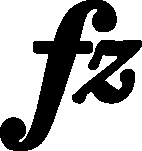



Verbal indications
|
b. 26
|
composition: Op. 28 No. 15, Prelude in D♭ major
..
In the main text we include – in a variant form – the marking added in FED and coming from Chopin. category imprint: Differences between sources |
||||||
|
b. 43
|
composition: Op. 28 No. 15, Prelude in D♭ major
..
The missing In EE2 the indication was probably repeated after GE. Moving it a quaver earlier was an arbitrary decision; however, it may comply with Chopin's intention, since he would sometimes place markings within the range of their scope, and not at the beginning. category imprint: Differences between sources issues: EE revisions , Errors in FE |
||||||
|
b. 44
|
composition: Op. 28 No. 15, Prelude in D♭ major
..
category imprint: Differences between sources |
||||||
|
b. 60
|
composition: Op. 28 No. 15, Prelude in D♭ major
..
At the beginning of the bar, EE1 has an additional category imprint: Differences between sources issues: EE revisions |
||||||
|
b. 84
|
composition: Op. 28 No. 15, Prelude in D♭ major
..
The placement of the category imprint: Graphic ambiguousness; Differences between sources; Corrections & alterations; Source & stylistic information issues: EE revisions , Errors of FC , Inaccuracies in A |

 in
in  present in the next bar in
present in the next bar in  quavers. However, a more thorough analysis of the notation of
quavers. However, a more thorough analysis of the notation of  ), which makes it impossible to write
), which makes it impossible to write